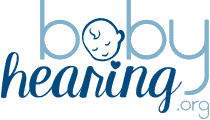Maximizing Outcomes for Children with Hearing Loss
Children with cochlear implants can be expected to make early and continued progress with their device. How rapidly progress occurs is dependent upon a number of factors that exist prior to and after implantation. These factors include:
- Age of implantation
- Duration of deafness (before or after acquisition of speech)
- Previous exposure to amplification (e.g., hearing aid use)
- Presence of an established language system
- Presence of other learning difficulties
- Cognitive skills
- Etiology of hearing loss
- Level and frequency of intervention services
It can be helpful to think of the cochlear implant as a “sound messenger”, with the purpose of delivering auditory signals to the auditory nerve and the brain. The child’s ability to incorporate this signal into a meaningful message varies on an individual basis. Some factors that can impact a child’s performance include:
- Consistent device use (all waking hours or >10 hours of device use per day)
- Regular processor programming and device maintenance
- Educational setting for school-age children
- Availability and quality of intervention and support services (speech-language therapy, aural (re)habilitation program)
- Expectations of the individual, parents and those who interact with the recipient
- Strong family support network
Hearing and Language Websites
Boys Town has created in-depth websites to help parents, caregivers, educators and others caring for children who have been newly diagnosed as Deaf or hard-of-hearing and for individuals of all ages with speech-language concerns.


Hearing and Balance
